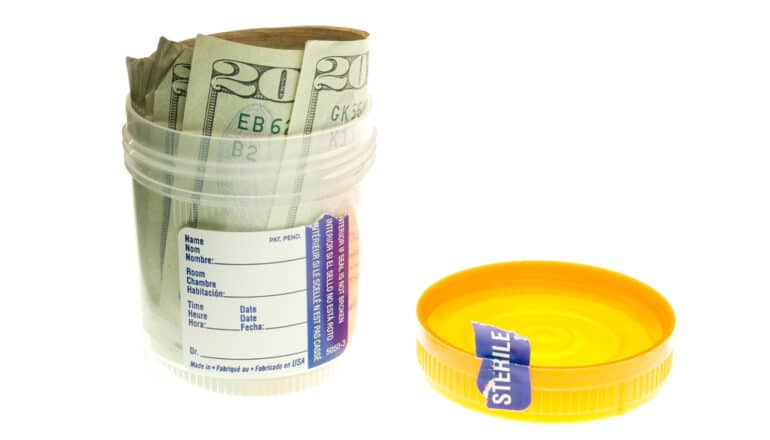Method turns urine into super valuable material
- A research team has engineered a yeast platform that converts human urine into hydroxyapatite, a high-value, biocompatible substance for use in dental and bone implants.
- The process achieves two goals at once: removing human urine from wastewater streams and producing a material that can be commercially marketed for use in various settings.
- The method uses synthetic yeast cells called osteoyeast to drive the urine-to-HAp conversion, which takes less than one day and produces up to 1 gram of HAp per liter of urine.
- The process is scalable, inexpensive, and accessible to developing economies, making it a potential renewable and biodegradable alternative to commodities like plastics and other building materials.
- The researchers plan to leverage the yeast platform for other applications, including energy-based materials and 3D printing, with the goal of creating multifunctional architected materials.

A research team has engineered a yeast platform that converts human urine from wastewater into hydroxyapatite.
Hydroxyapatitea is high-value, biocompatible substance for use in dental and bone implants, restoration of archaeological artifacts, and other applications.
In a paper in Nature Communications, the researchers offer a techno-economic analysis of the technique to transform urine—which can seriously damage watersheds—into HAp, a calcium phosphate mineral projected to hold a market value of more than $3.5 billion by 2030.
“This process achieves two goals at the same time,” says coauthor David Kisailus, a University of California, Irvine professor of materials science and engineering.
“On the one hand, it helps remove human urine from wastewater streams, mitigating environmental pollution and the buildup of unwanted nutrients; and on the other hand, it produces a material that can be commercially marketed for use in a variety of settings.”
In the Nature Communications paper, he and his collaborators—including scientists from Lawrence Berkeley National Laboratory, the University of Illinois Urbana-Champaign, and Japan’s Hokkaido University and Tokyo University of Agriculture and Technology—discuss how they developed and evaluated a biologically inspired system based on synthetic yeast cells they dubbed “osteoyeast” that drive the urine-to-HAp conversion.
In mammals, specialized cells called osteoblasts draw calcium phosphate from body fluids that is then processed and secreted as HAp. Osteoblasts are not suitable for large-scale industrial HAp production, according to the researchers, so they turned to osteoyeast, which uses enzymes to break down urea and increase the pH of the surrounding environment. This triggers tiny cavities in the yeast to accumulate calcium and phosphate that are then secreted and crystallized into HAp.
The scientists found that their method can produce as much as 1 gram of HAp per liter of urine.
“This process to yield hydroxyapatite, or bone mineral, takes less than one day,” Kisailus says.
“The fact that it uses yeast as a chassis, which is inexpensive and can be placed in large vats at relatively low temperatures—think about beer that’s made via fermentation processes and is well scaled—shows that this can be done easily without major infrastructural needs, and that has the added benefit of making it accessible to developing economies.”
Kisailus, who has a deep background in researching crystal growth mechanisms as well as making inorganic crystalline materials using biological and bio-inspired methods, says his main role in this project was to evaluate crystallization pathways in the osteoyeast platform.
According to the researchers, HAp composites are lightweight and offer significant mechanical strength, toughness and durability. And if synthetic hydroxyapatite that had its origins in urine can be produced economically and at scale, it can serve as a renewable and biodegradable alternative to commodities like plastics and other building materials.
“I am continuing to work with Professor Yasuo Yoshikuni from Lawrence Berkeley Laboratory, a corresponding author of this paper, to make other materials using this process, including materials for energy-based applications,” Kisailus says.
“We are currently developing strategies to leverage his yeast platform with our 3D printing and structural knowledge to make multifunctional architected materials.”
The research project received financial support from the US Department of Energy, the Defense Advanced Research Projects Agency, and the Air Force Office of Scientific Research.
Source: UC Irvine
The post Method turns urine into super valuable material appeared first on Futurity.
